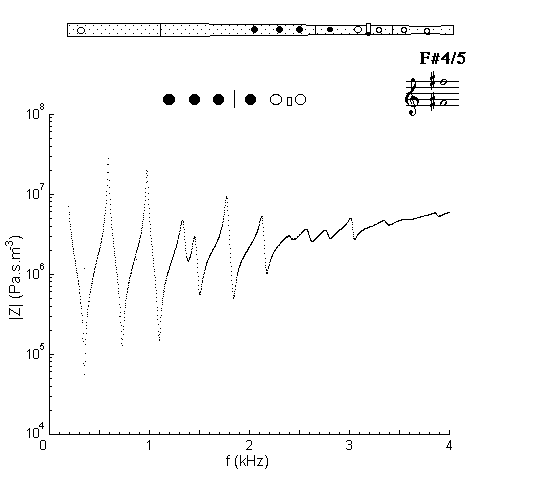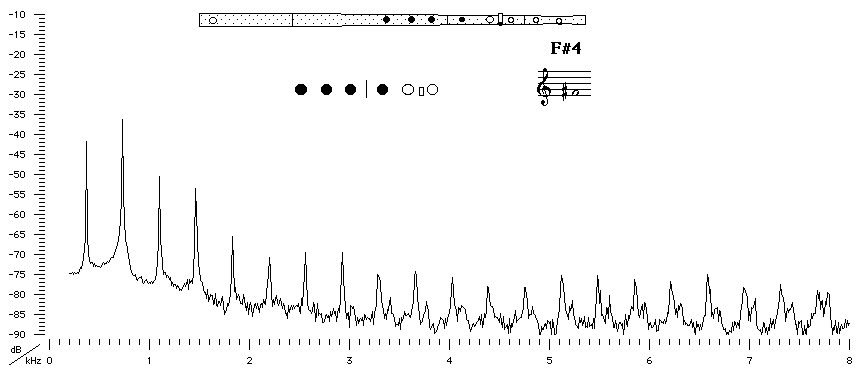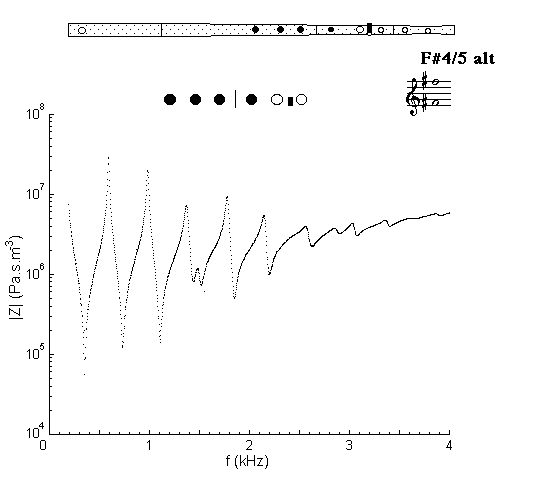| Acoustics of baroque, classical and modern flutes |
classical flute
|
F#4 |

|
Acoustic and Fingering Schematic Non-specialist introduction
to acoustic impedance |
The first open hole here (RH 2nd finger) is the largest on the instrument. The fingering given below gives a brighter timbre, but is awkward in many passages.

Sound spectrum
of a classical flute with a flared foot played using conventional
fingering for F#4.
![]()
![]()
![]()
![]()
![]() You can hear F#4
played with conventional fingering
by Geoffrey Collins.
You can hear F#4
played with conventional fingering
by Geoffrey Collins.
Alternative Fingering |
classical flute flared foot |

|
Acoustic and Fingering Schematic Non-specialist introduction
to acoustic impedance |
This alternative fingering opens the second downstream tone hole, which gives a more harmonic spacing to the fifth and sixth minima in the impedance spectrum and thus gives stronger fifth and sixth harmonics, resulting in a brighter timbre. However, it is awkward in many passages.

Sound spectrum of a classical flute with a flared foot played using alternative
fingering for F#4.
![]()
![]()
![]()
![]()
![]() You can hear F#4
played with alternative fingering
by Geoffrey Collins.
You can hear F#4
played with alternative fingering
by Geoffrey Collins.
| Acoustic measurements are available for these flutes - modern B, modern C, classical C, classical D, classical flared, baroque Sound clips are available for modern B, classical flared and baroque |
To compare flutes, it is easiest to open a separate browser window for each instrument. |